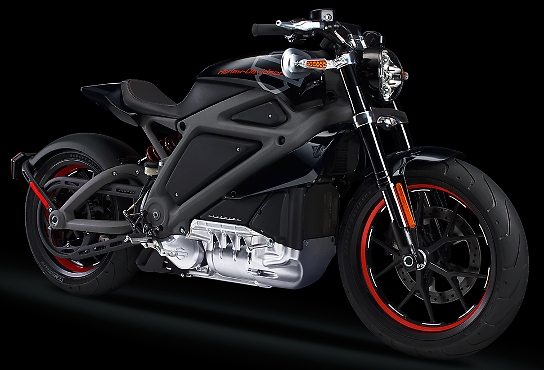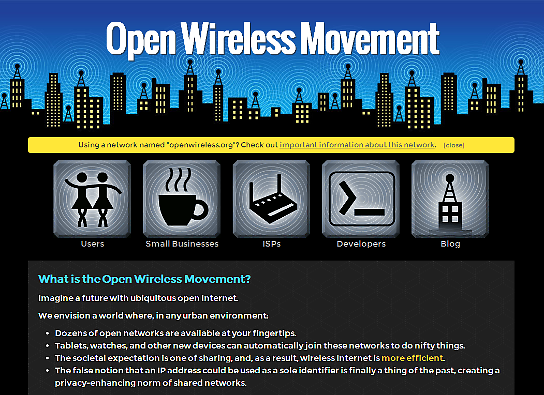 OK, I REALLY need one of these! Man! This is just so awesome! I am a big fan of both Harley’s and electric vehicles… yes, please! It is only “experimental” but I could help them with the experiment, just sayin’!
OK, I REALLY need one of these! Man! This is just so awesome! I am a big fan of both Harley’s and electric vehicles… yes, please! It is only “experimental” but I could help them with the experiment, just sayin’!
Harley-Davidson’s First Electric Motorcycle Surprisingly Doesn’t Suck
Wired – By: Alex Davies – Harley-Davidson is more than a motorcycle, or even a brand. It is an icon, one that brings to mind big, loud bikes ridden by burly men with tattoos and beards. The company has long been known for rumbling V-twin engines and the open road. All of which makes the idea of an electric Harley seem downright absurd.
It’s actually pretty cool.
The LiveWire is the first electric two-wheeler out of Milwaukee. We spent an afternoon riding one amongst the weeds and broken glass of an abandoned Marine Corps runway outside Los Angeles last week and came away impressed. The Hell’s Angels aren’t going to be riding them anytime soon, but the bike offers an entertaining blend of power and comfort. It doesn’t sound anything at all like a proper Harley—or a ‘fighter jet landing on an aircraft carrier’ as Harley brass say—but it’s got a futuristic sound that brings to mind an airliner taking to the air.
The LiveWire may not rumble like the Harleys everyone knows, and it doesn’t perform like them. But it’ll hit 60 mph in under four seconds and it’s got more style than other electrics we’ve ridden. Now Harley has to find out if anyone actually wants the thing.
Cutting weight and potatoes
If Harley-Davidson isn’t the world’s most famous motorcycle, it’s close. The company has been building motorcycles since 1903, and typically subscribes to the bigger-is-better school of engineering. But even Harley-Davidson knows the times are changing, and it recognizes the need to diversify a customer base dominated by middle-aged white guys. Upstarts like Zero Motorcycles and Brammo have proven one way to attract younger, urban riders is selling small, compact bikes powered by batteries. Even major players like Yamaha are giving electrics a go. So Harley is trying it out, too.
‘Any business has always got to look ahead to see where customers are interested in going, and see where society might be going,’ says Mark-Hans Richer, Harley’s top marketing guy.
That said, this isn’t a production model. Not yet, anyway. Harley is taking a few dozen LiveWires on a tour, dubbed Project LiveWire, of the United States and Europe. It will invite people in each city to check out the bike and provide feedback. The tour starts Monday in New York.
The key challenge in building the LiveWire was the shift from building a bike around an engine to building one around a battery. A battery is heavy—Harley wouldn’t say what the pack weighs, but one EV expert told us something with the range and recharge time Harley claims would be around 250 pounds—so engineers had to cut weight elsewhere. The cast aluminum perimeter frame wrapped around the battery box weighs just 14 pounds, which makes it a full eight pounds lighter than the Zero’s frame. The wheels have hollow spokes, and Harley claims they’re among the lightest aluminum wheels it’s ever produced. There’s no need for an exhaust system, which not only saves weight but gives the bike a sleeker look. The result is a clean, tightly packaged bike without frivolous details.
Harley did most of the chassis work—it’s been building bikes since the dawn of internal combustion, so it’s got that down pat—but brought in experts like Mission Motors for help with things like the motor controller.
Speaking of the motor, the LiveWire marks quite a departure from Harley’s signature sound. You don’t get the syncopated ‘potato, potato, potato’ that is synonymous with a 60-degree V-twin engine. But even though it’s electric, and therefore has no engine, the LiveWire had to live up to Harley’s ‘look, sound, and feel’ mantra. That took a lot of work, but company president and COO Matt Levatich insists the result is ‘not contrived.’
The high-pitched whir of the longitudinally-mounted, three-phase AC induction motor reverberates through the chassis, amplifying the sound. It starts off quietly, then builds in pitch and volume as the bike gains speed. It’s louder than you’d think, and though it’s not going to set off any car alarms, it’ll definitely make you smile.
What customers want
The LiveWire offers 74 horsepower, 52 foot-pounds of torque and a (governed) top speed of 92 mph. It’s more powerful and quicker off the line than the $13,000 Zero DS, but it’s got less torque and range. That said, it’s got more torque and power than Harley’s Iron 883.
Still, Harley execs and engineers don’t like talking about specs. They don’t want potential customers making judgments based on what the LiveWire offers right now. The LiveWire is a work in progress, based on ‘what we think our customers are looking for,’ Richer says. The company hopes to glean more info during the LiveWire tour, and iterate accordingly to suit consumer tastes. Think of this as LiveWire v1.0.
Harley isn’t saying much about the drivetrain beyond saying the bike uses a lithium-ion battery with a range of 53 miles. It charges in 3.5 hours at 220 volts. Assuming the bike has a 3.3 kw charging system like other electric motorcycles, some back-of-the-envelope math suggests the LiveWire uses a 10 kilowatt-hour pack. Twist the throttle and the bike leaps forward with authority. Roll off the throttle and the regenerative braking kicks in, bringing the bike down from speed with due efficiency.
Harley emphasizes its excitement over the LiveWire, but downplays its importance. An electric bike is just an idea, something that could draw younger, urban buyers to the brand. Companies like Zero have had some success with that strategy, and even convinced a few police departments to add electrics to their fleets. ‘This is just part of us understanding where the world might want to go,’ Richer says. The upside of so cautious an approach, of course, is there’s less fallout if the bike is a flop.
New direction
That’s not out of the question. Harley’s past forays into the potentially lucrative market for smaller, city-focused bikes have ended poorly. That hasn’t kept it from trying again this year with the launch of the Street, a simpler, cheaper, bike made for city riding. The LiveWire is another step in that direction.
‘Why can’t Harley do some of these other cool things, too, and see where it takes us?’ Levatich says.”



 Check out Picasa! I downloaded it for it’s “red eye remover” tool. It worked perfectly! I needed it to remove “red eye” from some wedding photos I shot for my nephew. Picasa is free, and was just what I was looking for!
Check out Picasa! I downloaded it for it’s “red eye remover” tool. It worked perfectly! I needed it to remove “red eye” from some wedding photos I shot for my nephew. Picasa is free, and was just what I was looking for! This is an interesting idea… they say that “information desires to be free!” And, it gets us closer to ubiquitous WiFi!
This is an interesting idea… they say that “information desires to be free!” And, it gets us closer to ubiquitous WiFi! So, NASA showed us, this week, what a REAL Warp Drive FTL ship might look like, if they ever make one. The result, Geek Culture coolness!
So, NASA showed us, this week, what a REAL Warp Drive FTL ship might look like, if they ever make one. The result, Geek Culture coolness! OK, I REALLY need one of these! Man! This is just so awesome! I am a big fan of both Harley’s and electric vehicles… yes, please! It is only “experimental” but I could help them with the experiment, just sayin’!
OK, I REALLY need one of these! Man! This is just so awesome! I am a big fan of both Harley’s and electric vehicles… yes, please! It is only “experimental” but I could help them with the experiment, just sayin’!